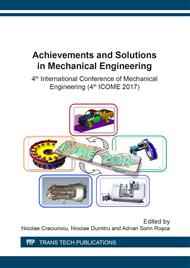p.118
p.124
p.130
p.136
p.145
p.151
p.157
p.163
p.171
Combustion Characteristic of Diesel Engine Fueled by Biodiesel at Partial Load
Abstract:
This paper investigated the performance and combustion characteristics of diesel engine fueled by biodiesel at partial load conditions. Experiments were made on a common-rail fuel injection diesel engine using mineral diesel and blends (6% and 10%) with biodiesel obtained from peanut oil and waste oil under various loads. The results shows that blend fuels have a significant impact on the engine’s brake specific fuel consumption (BSFC) and brake thermal efficiency (BTE) at partial load conditions. The BSFC increase for blends with the decrease of engine load. For BTE, the results show that the use of biodiesel results in a reduced thermal efficiency at lower engine loads and improved thermal efficiency at higher engine loads.
Info:
Periodical:
Pages:
145-150
Citation:
Online since:
March 2018
Authors:
Keywords:
Price:
Сopyright:
© 2018 Trans Tech Publications Ltd. All Rights Reserved
Share:
Citation:


